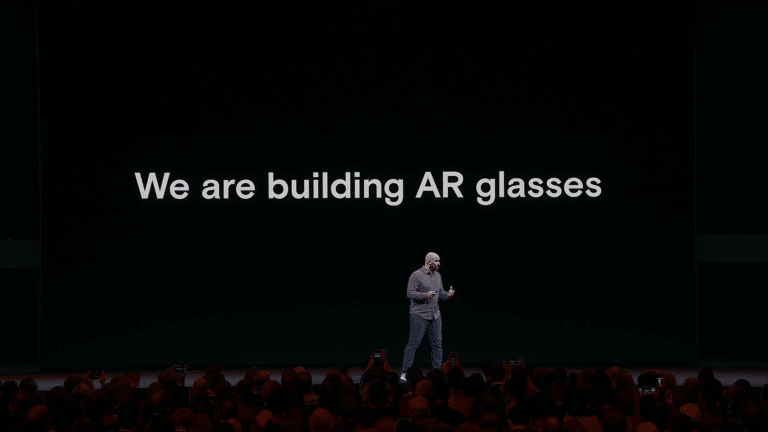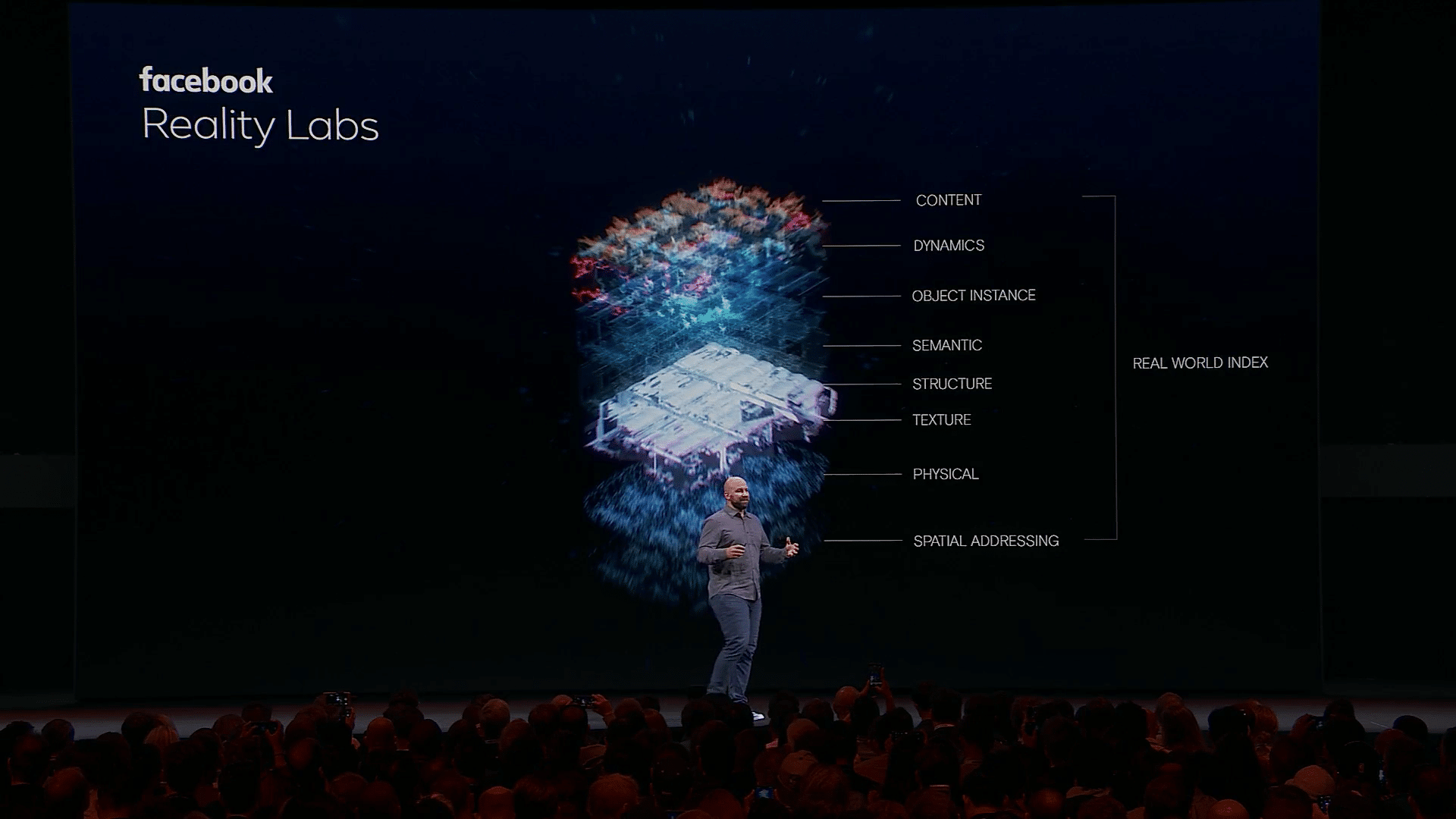
Tech giants’ motivations in AR often trace back to their core businesses. This is simply to future proof massive sums of revenue. And due to these companies’ gravitational pull, they can move large chunks of the market along with them.
So plotting AR’s trajectory becomes an exercise in “following the money,” as we wrote in Charlie Fink’s book, Convergence. For Google, AR efforts are to drive search (visual search, mapping). For Apple, it’s about moving hardware — iPhones today and a wearables suite in the longer term.
Amazon wants AR for product visualization, pursuant to boosting e-commerce sales and reducing returns. Microsoft wants to double down on a longstanding position in enterprise productivity, and Facebook wants AR (and VR primarily) to boost social engagement and ad revenue.
Add it all up and each of these players will rule a different “layer” to the immersive web. Google will be the knowledge layer, just like its web index serves that purpose on the 2D web. Amazon will be the commerce layer, Microsoft the productivity layer and Facebook, the social/identity layer.

The Social Layer
We’ve been toying with this “follow the money” exercise for a while, but it gained steam at yesterday’s OC6 keynote. Besides the news that Facebook is working on AR glasses (more on that in a bit), it revealed its work in building persistent spatial mapping data, known as Live Maps.
Just like Magic Leap has the Magicverse, this is essentially Facebook’s flavor of the AR Cloud. The eventual vision is to have a sort of 3D rendering of the social graph. That could include sharing info (think: status updates) with friends in 3D space, anchored to people or things.
To step towards that vision, the Live Maps initiative it showed yesterday is more about physical spaces (less of a privacy issue) than people. This is key to the vision that CTO Michael Abrash outlined later in the Keynote about having collaborative work environments in mixed reality.

To build Live Maps, Facebook will rely on a vague combination of crowdsourced devices and its own spatial mapping. Though it didn’t say this, it could gather spatial mapping data through the room-scale mapping already done in its Guardian and Insights tracking systems for VR.
Facebook’s scale and ability to crowdsource data in these ways could be an advantage. But questions remain on how reliably and extensively it can build spatial maps, given the challenges continually tackled by more focused and specialized AR cloud startups like 6D.ai (acquisition?).
As for Facebook’s AR glasses, they’ll go hand in hand with Live Maps. There’s a classic chicken and egg dynamic, where glasses need content (built on Live Maps) to populate experiences. And the content will only be valuable if there’s enough hardware through which to experience it.
Integrated Systems
Speaking of things that go hand-in-hand, all of Facebook’s AR and VR efforts are interlinked in some way (back to Convergence). Abrash has said at past OC conferences that AR and VR share technological underpinnings. So primary VR ambitions can be accelerated through mastering AR.
“VR can advance farther and faster by leveraging AR,” he said last year. “No off-the-shelf display technology is good enough for AR, so we had no choice but to develop a new display system. And that system also happens to have the potential to take VR to a different level.”
If we apply this same “reality spectrum” concept to the above discussion about an AR social layer, a corresponding VR social layer is evident. That can be seen in new features announced yesterday that bring more social graph activities (posting, connecting, etc.) to Oculus headsets.
But the broader point is about integrated systems. As Abrash unpacked later in his presentation, the original Alto PC at Xerox Parc required several moving parts that hadn’t previously been integrated. VR will follow the same path in terms of several components his team is working on.
AR is one of those pieces with a role in the integrated vision, but also a nearer-term standalone role. That includes mobile AR and glasses — both revenue centers that are funded by a highly-motivated tech giant that will accelerate the technology. That could be good for AR in general.
For deeper XR data and intelligence, join ARtillery PRO and subscribe to the free AR Insider Weekly newsletter.
Disclosure: AR Insider has no financial stake in the companies mentioned in this post, nor received payment for its production. Disclosure and ethics policy can be seen here.
Header image credit: Facebook, YouTube

